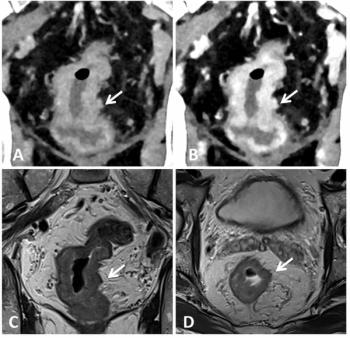
Proton MRS spots heart problems early on in patients with diabetes
Cardiac proton MR spectroscopy helps identify early signs of heart dysfunction in patients with impaired glucose tolerance or Type 2 diabetes, a finding that could enable early interventions to ward off organ failure, according to a new study published in the journal Circulation.
Cardiac proton MR spectroscopy helps identify early signs of heart dysfunction in patients with impaired glucose tolerance or Type 2 diabetes, a finding that could enable early interventions to ward off organ failure, according to a new study published in the journal Circulation.Patients with diabetes may develop coronary artery disease and cardiac myopathy. Animal studies had shown that cardiac myopathy is related to the buildup of lipids and other products of fatty acid metabolism. The new multicenter study, from researchers at the University of Texas Southwestern Medical Center in Dallas and other institutions in the same area, shows that this is also the case for humans (Circulation 2007;116(10):1170-1175).
The study included 134 people with no history of coronary artery disease or heart failure who were divided into four groups:
- lean
- overweight and obese
- impaired glucose tolerance
- Type 2 diabetes
The researchers concluded that myocardial triglyceride buildup was more than twice as high in those with impaired glucose tolerance and Type 2 diabetes.
Cardiac MRS was more accurate in detecting cardiac steatosis than standard serum measurements for triglycerides, they found. The findings indicate that lipid buildup occurs prior to heart failure and Type 2 diabetes, raising prospects for effective interventions following imaging studies.
In an accompanying editorial, Dr. Frederick Ruberg of Boston University noted that this is the largest study of cardiac spectroscopy in human subjects (Circulation 2007;116:1110-1112). Ruberg wrote that thanks to this research, "myocardial lipid content may one day be used as a biomarker to predict development of cardiac dysfunction in patients with insulin resistant states and may serve as a measurable target for intervention before the development of cardiomyopathy."Ruberg also noted that proton MRS is a "powerful research tool," but since it is technically challenging, use in the community setting seems unlikely at this time.For more information from the Diagnostic Imaging archives:
Ultrasound shows atrophy of foot muscles in patients with diabetes
Dual source CT excels in segment-by-segment diagnosis of coronary artery disease
MR imaging spots silent but deadly cardiac conditions
F-18 PET shows early diabetes risk
Newsletter
Stay at the forefront of radiology with the Diagnostic Imaging newsletter, delivering the latest news, clinical insights, and imaging advancements for today’s radiologists.



























